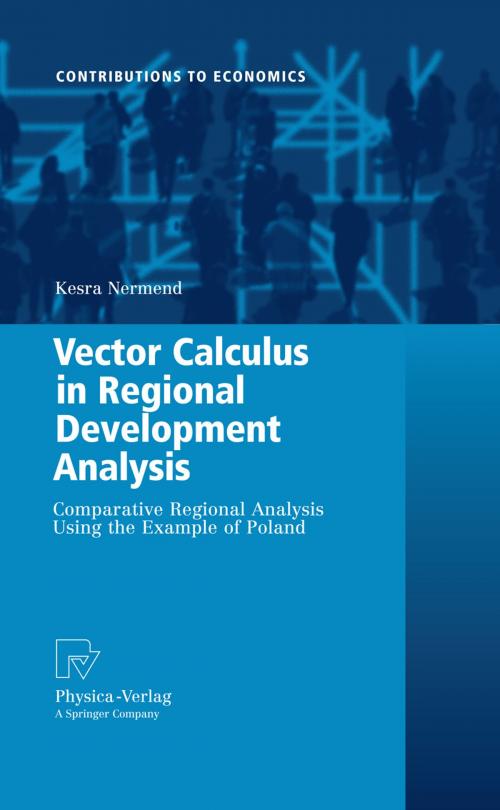Vector Calculus in Regional Development Analysis
Comparative Regional Analysis Using the Example of Poland
Business & Finance, Economics, Urban & Regional, Nonfiction, Social & Cultural Studies, Political Science, Politics, Economic Policy| Author: | Kesra Nermend | ISBN: | 9783790821796 |
| Publisher: | Physica-Verlag HD | Publication: | April 29, 2009 |
| Imprint: | Physica | Language: | English |
| Author: | Kesra Nermend |
| ISBN: | 9783790821796 |
| Publisher: | Physica-Verlag HD |
| Publication: | April 29, 2009 |
| Imprint: | Physica |
| Language: | English |
Methods used for regional development analysis are employed mainly to make forecasts and comparisons. Forecasting models of various types (e.g. econometric models) are usually used for forecasting. Recently, vector-autoregressive models (VAR) have become popular. These models were proposed by Sims in 1980. On the contrary, taxonomic methods (that are in the center of attention as far as the present publication is concerned) are most often employed to make comparisons. Linear ordering methods, including standard methods, are the most popular among ta- nomic methods. They are based on different distance and similarity measures, which leads to the fact that they do not always provide reliable information. When, for example, one construes the standard for a base year and then compares it with data for other years, it may turn out that the measure determined will have worse values than the standard for a real object (region, micro region) although this object is better from the standard. Hence, one must look for new methods employed in regional development analysis or improve hitherto existing ones in such a way so that information obtained re?ects the reality to a larger extent. The main aim of the present publication is to work out methodological basis for regional development analysis based on vector calculus together with assumptions about computer system supporting the implementation of the method suggested.
Methods used for regional development analysis are employed mainly to make forecasts and comparisons. Forecasting models of various types (e.g. econometric models) are usually used for forecasting. Recently, vector-autoregressive models (VAR) have become popular. These models were proposed by Sims in 1980. On the contrary, taxonomic methods (that are in the center of attention as far as the present publication is concerned) are most often employed to make comparisons. Linear ordering methods, including standard methods, are the most popular among ta- nomic methods. They are based on different distance and similarity measures, which leads to the fact that they do not always provide reliable information. When, for example, one construes the standard for a base year and then compares it with data for other years, it may turn out that the measure determined will have worse values than the standard for a real object (region, micro region) although this object is better from the standard. Hence, one must look for new methods employed in regional development analysis or improve hitherto existing ones in such a way so that information obtained re?ects the reality to a larger extent. The main aim of the present publication is to work out methodological basis for regional development analysis based on vector calculus together with assumptions about computer system supporting the implementation of the method suggested.















